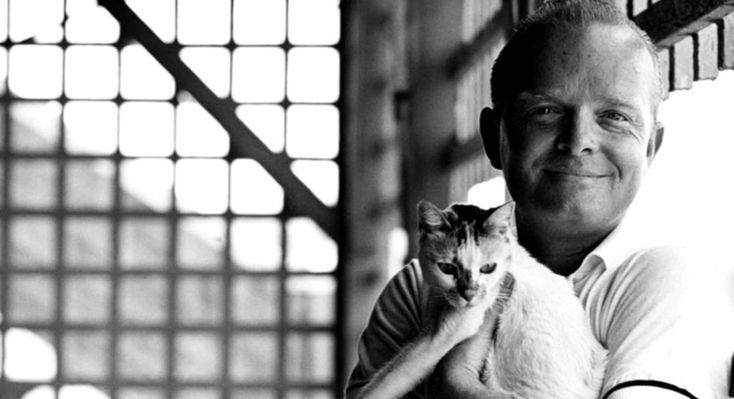Общественное животное: введение в социальную психологию - Эллиот Аронсон
Книгу Общественное животное: введение в социальную психологию - Эллиот Аронсон читаем онлайн бесплатно полную версию! Чтобы начать читать не надо регистрации. Напомним, что читать онлайн вы можете не только на компьютере, но и на андроид (Android), iPhone и iPad. Приятного чтения!
Шрифт:
Интервал:
Закладка:
408
Shafer, D.R., & Wallace, A. (1990). Belief congruence and evaluator homophobia as determinants of the attractiveness of competent homosexual and heterosexual males. Journal of Psychology & Human Sexuality, 3, 67–87.
409
Steele, С. (1992, April). Race and the schooling of black Americans. The Atlantic Monthly, pp. 68–78.
410
Steele, С., & Aronson, J. (1994). Stereotype vulnerability: A psychological approach to underachievement among black Americans. Paper presented at the meeting of the Western Psychological Association, Kona, Hawaii, April, 1994.
411
Pettigrew, T.F. (1979). The ultimate atrribution error: Extending Allport’s cognitive analysis of prejudice. Personality and Social Psychology Bulletin, 5, 461–476.
412
Ibid.
413
Feldman-Summers, S., & Kiesler, S.B. (1974). Those who are number two try harder: The effect of sex on attributions of causality. Journal of Personality and Social Psychology, 30,80–85.
414
Deaux, К., & Ernsweiler, Т. (1974), Explanations of successful performance on sex-linked tasks: What is skill for male is luck for the female. Journal of Personality and Social Psychology, 29, 80–85.
415
Nicholls, J.G. (1975). Causal attributions and other achievement-related cognitions: Effect of task outcome, attainment value, and sex. Journal of Personality and Social Psychology, 31,379–389.
416
Weinberg, R.S., Richardson, P.A., & Jackson, A. (1983). Effect of situation criticality on tennis performance of males and females. Newsletter of the Society for the Advancement of Soda! Psychology, 9, 8–9.
417
Turner, M., & Pratkanis, A. (1993). Effects of preferential and meritorious selection on performance: An examination of intuitive and self-handicapping perspectives. Personality and Social Psychology Bulletin, 19, 47–58.
418
Deaux, К., & Таупог, J. (1973). Evaluation of male and female ability: Bias works two ways. Psychological Reports, 32, 261–262.
419
Lerner, M. (1965). Evaluation of performance as a function of performer’s reward and attractiveness. Journal of Personality and Social Psychology, 1, 355–360. Lerner, M. (1980). The justice motive. New York: Plenum.
420
Furnham, A., & Gunter, B. (1984). Just world beliefs and attitudes toward the poor. British Journal of Social Psychology, 23, 265–269.
421
Fischhoff, В., & Beyth, R. (1975). «I knew it would happen»: Remembered probabilities on once-future things. Organizational Behavior and Human Performance, 13, 1–16.
422
Janoff-Bulman, R., Tirnko, C., & Carli, L.L. (1985). Cognitive biases in blaming the victim. Journal of Experimental Social Psychology, 21, 161–177.
423
Gould, S. (1977). Ever since Darwin: Reflections on natural history (p. 243). New York: W.W. Norton.
424
Pearson, K., & Мои!, M. (1925). The problem of alien immigration into Great Britain, illustrated by an example of Russian and Polish Jewish children. Annals of Eugenics, 1,5–127.
425
Janis, 1., & Field, P. (1959). Sex difference and personality factors related to persuasibility. In C.I. Hoviand and I.L. Janis (Ed.), Personality and persuasibility (pp. 55–68). New Haven: Yale University Press.
426
Sistrunk, F., & McDavid, J. (1971). Sex variable in conforming behavior. Journal of Personality and Social Psychology, 77, 200–207.
427
Word, С., Zanna, M., & Cooper, J. (1974). The nonverbal mediation of self-fulfilling prophecies in interracial interaction. Journal of Experimental Social Psychology, 10,109–120.
428
Snyder, M. (1984). When belief creates reality. In L. Berkowitz (Ed.), Advances in experimental social psychology (Vol. 18, pp. 247–305). Orlando, FL: Academic Press.
429
Merton, R.F. (1968). The self-fulfilling prophecy. Antioch Review, 8, 193–210.
430
Snyder, M., & Swann, W.B., Jr. (1978). Hypothesis-testing processes in social interactions. Journal of Personality and Social Psychology, 36, 1202–1212.
431
Обзор результатов — см.: Pettigrew, T.F. (1985). New black-white patterns: How best to conceptualize them? Annual Review of Sociology, II, 329–346.
432
Frey, D.L., & Gaertner, S.I. (1986). Helping and the avoidance of inappropriate interracial behavior: A strategy that perpetuates a non-prejudiced self-image. Journal of Personality and Social Psychology, 50, 1083–1090.
433
Devine, P.G. (1989). Stereotypes and prejudice: Their automatic and controlled components. Journal of Personality and Social Psychology, 56, 5–18.
434
Bern, D., & Bern, S. (1970, November). We’re all nonconscious sexists. Psychology Today, pp. 22–26, 115–116.
435
Weitynan, L., Eifler, D., Hokada, E., & Ross, C. (1972). Sex-role socialization in picture books for preschool children. American Journal of Psychology, 77, 1 125–1 150. Kolbe, R., & La Voie, J. (1981). Sex-role stereotyping in preschool children’s picture books. Social Psychology Quarterly, 44, 369–374.
436
Hartley, R. (1960), Children’s concepts of male and female roles. Merrill-Palmer Quarterly, 6,83–91.
437
Lipman-Blumen, J. (1972). How ideology shapes women’s lives. Scientific American, 226(), 34–42.
438
Gray, S. W. (1975). Masculinity-femininity in relation to anxiety and social acceptance. Child Development, 28, 203–214.
439
Broverman, I.К., Vogel, S., Broverman, D., Clarkson, F., & Rosencrantz, P. (1972). Sex-role stereotypes: A current appraisal. Journal of Social Issues, 28, 59–78.
440
Porter, N., & Geis, F. (1981). Women and nonverbal leadership cues: When seeing is not believing. In C. Mayo and N. Henley (Eds.), Gender and nonverbal behavior. New York: Springer-Verlag.
441
Прочитали книгу? Предлагаем вам поделится своим отзывом от прочитанного(прослушанного)! Ваш отзыв будет полезен читателям, которые еще только собираются познакомиться с произведением.
Уважаемые читатели, слушатели и просто посетители нашей библиотеки! Просим Вас придерживаться определенных правил при комментировании литературных произведений.
- 1. Просьба отказаться от дискриминационных высказываний. Мы защищаем право наших читателей свободно выражать свою точку зрения. Вместе с тем мы не терпим агрессии. На сайте запрещено оставлять комментарий, который содержит унизительные высказывания или призывы к насилию по отношению к отдельным лицам или группам людей на основании их расы, этнического происхождения, вероисповедания, недееспособности, пола, возраста, статуса ветерана, касты или сексуальной ориентации.
- 2. Просьба отказаться от оскорблений, угроз и запугиваний.
- 3. Просьба отказаться от нецензурной лексики.
- 4. Просьба вести себя максимально корректно как по отношению к авторам, так и по отношению к другим читателям и их комментариям.
Надеемся на Ваше понимание и благоразумие. С уважением, администратор knigkindom.ru.
Оставить комментарий
-
 Гость Светлана23 ноябрь 13:52
Как раз тот случай, когда героиня кроме раздражения ничего не вызывает. Читала другие книги Майер и ощущение, что писал кто -то...
Ты еще маленькая - Кристина Майер
Гость Светлана23 ноябрь 13:52
Как раз тот случай, когда героиня кроме раздражения ничего не вызывает. Читала другие книги Майер и ощущение, что писал кто -то...
Ты еще маленькая - Кристина Майер
-
 Гость Евгения17 ноябрь 16:05
Читать интересно. Очень хороший перевод. ...
Знаки - Дэвид Бальдаччи
Гость Евгения17 ноябрь 16:05
Читать интересно. Очень хороший перевод. ...
Знаки - Дэвид Бальдаччи
-
 Юлианна16 ноябрь 23:06
Читаю эту книгу и хочется плакать. К сожалению, перевод сделан chatGPT или Google translator. Как иначе объяснить, что о докторе...
Тайна из тайн - Дэн Браун
Юлианна16 ноябрь 23:06
Читаю эту книгу и хочется плакать. К сожалению, перевод сделан chatGPT или Google translator. Как иначе объяснить, что о докторе...
Тайна из тайн - Дэн Браун










